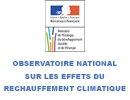Study of the Impact of Climate Change on Vector-Borne Diseases in West Africa: Tick-Borne Borreliosis and Malaria
Study of the Impact of Climate Change on Vector-Borne Diseases in West Africa: Tick-Borne Borreliosis and Malaria
Malaria and tick-borne borreliosis form the two leading causes of morbidity from vector-borne disease in the savannah of sub-Saharan Africa. They are also the two tropical diseases most impacted in their epidemiology by climate change.
Where tick-borne borreliosis is concerned (recurring Borrelia crocidurae fever), it has been demonstrated, in Senegal, that the persisting pluviometric deficit since the early 1970s is tied to a considerable extension of the disease’s geographic distribution and that of vector tick Alectorobius sonrai, a species previously limited to the Sahara and Sahel regions and also now reported in the Mediterranean zone. This tick, most commonly found in the burrows of small mammals that form the disease’s reservoir, occasionally bites man hence transmitting borreliosis.
In Senegal, the disease is now found in the savannah of Sudan and has become, in rural areas, the second-leading cause of clinic visits due to vector-borne disease. Little data are available on the other countries of West and North Africa and the vector’s distribution limits in those countries are not known. This study endeavours to test the hypotheses of widespread extension of tick-borne borreliosis in the Sudan region, from Senegal to Chad, which is thought to be exactly the zone across which the isohyet has been seen to move southward by 750 mm since 1970. Also proposed are studies to: ascertain the vector’s presence in the Mediterranean zone; compare the working of the host/vector/parasite systems in the Sudan, Sahara and Sahel zones; and genotype, using molecular biology tools, the Borrelia crocidurae and Alectorobius sonrai populations from different geographic regions and ecological zones. Understanding the processes by which man is contaminated, in particular investigating the hypothesis that the vector tick does not come out of the burrows except at night and that almost all man-tick contact is intra-domicile and connected to the presence of burrows in houses, would make it possible to propose a risk management system based solely on the destruction of rodent burrows leading into houses. Determining molecular markers for B. crocidurae would make it possible to develop quick and effective diagnostic methods.
Where malaria is concerned, drought has, across the same regions of Africa, significantly reduced the distribution, abundance and infection rate of malaria vector Anopheles. A series of entomological investigations is proposed in Senegal and Mauritania, as part of preparations for a project aimed at verifying the hypothesis that epidemic risk prediction is possible, through the surveillance of a limited number of climate-related, entomological and environmental factors. The data gathered in Mauritania will also make it possible to better delineate the penetration risk of Anopheles gambiae s.l. in North Africa, following the opening of the border between Mauritania and Morocco, in 2001.
| Coordinators |
Jean-François Trape, IRD – Centre de Dakar |
| Partnership |
IRD – Centre de Montpellier |
| Funding |
MEDD
|
| Budget |
115000€ (including tax)
|




